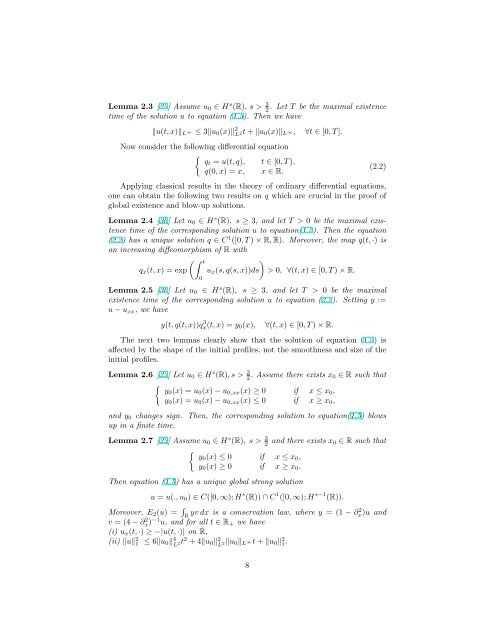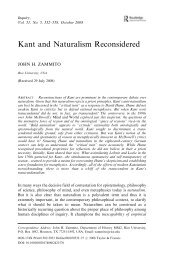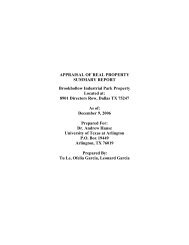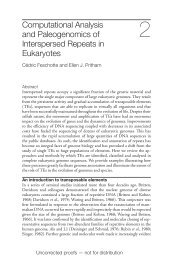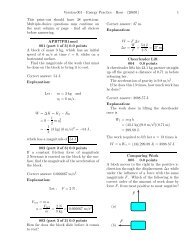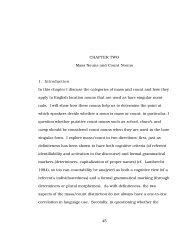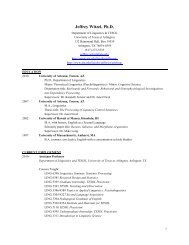Stability of Peakons for the Degasperis-Procesi Equation
Stability of Peakons for the Degasperis-Procesi Equation
Stability of Peakons for the Degasperis-Procesi Equation
Create successful ePaper yourself
Turn your PDF publications into a flip-book with our unique Google optimized e-Paper software.
Lemma 2.3 [23] Assume u 0 ∈ H s (R), s > 3 2<br />
. Let T be <strong>the</strong> maximal existence<br />
time <strong>of</strong> <strong>the</strong> solution u to equation (1.5). Then we have<br />
‖u(t, x)‖ L ∞ ≤ 3‖u 0 (x)‖ 2 L 2t + ‖u 0(x)‖ L ∞, ∀t ∈ [0, T ].<br />
Now consider <strong>the</strong> following differential equation<br />
{<br />
qt = u(t, q), t ∈ [0, T ),<br />
q(0, x) = x, x ∈ R.<br />
(2.2)<br />
Applying classical results in <strong>the</strong> <strong>the</strong>ory <strong>of</strong> ordinary differential equations,<br />
one can obtain <strong>the</strong> following two results on q which are crucial in <strong>the</strong> pro<strong>of</strong> <strong>of</strong><br />
global existence and blow-up solutions.<br />
Lemma 2.4 [30] Let u 0 ∈ H s (R), s ≥ 3, and let T > 0 be <strong>the</strong> maximal existence<br />
time <strong>of</strong> <strong>the</strong> corresponding solution u to equation(1.5). Then <strong>the</strong> equation<br />
(2.2) has a unique solution q ∈ C 1 ([0, T ) × R, R). Moreover, <strong>the</strong> map q(t, ·) is<br />
an increasing diffeomorphism <strong>of</strong> R with<br />
(∫ t<br />
)<br />
q x (t, x) = exp u x (s, q(s, x))ds > 0, ∀(t, x) ∈ [0, T ) × R.<br />
0<br />
Lemma 2.5 [30] Let u 0 ∈ H s (R), s ≥ 3, and let T > 0 be <strong>the</strong> maximal<br />
existence time <strong>of</strong> <strong>the</strong> corresponding solution u to equation (2.2). Setting y :=<br />
u − u xx , we have<br />
y(t, q(t, x))q 3 x(t, x) = y 0 (x), ∀(t, x) ∈ [0, T ) × R.<br />
The next two lemmas clearly show that <strong>the</strong> solution <strong>of</strong> equation (1.5) is<br />
affected by <strong>the</strong> shape <strong>of</strong> <strong>the</strong> initial pr<strong>of</strong>iles, not <strong>the</strong> smoothness and size <strong>of</strong> <strong>the</strong><br />
initial pr<strong>of</strong>iles.<br />
Lemma 2.6 [23] Let u 0 ∈ H s (R), s > 3 2 . Assume <strong>the</strong>re exists x 0 ∈ R such that<br />
{<br />
y0 (x) = u 0 (x) − u 0,xx (x) ≥ 0 if x ≤ x 0 ,<br />
y 0 (x) = u 0 (x) − u 0,xx (x) ≤ 0 if x ≥ x 0 ,<br />
and y 0 changes sign. Then, <strong>the</strong> corresponding solution to equation(1.5) blows<br />
up in a finite time.<br />
Lemma 2.7 [23] Assume u 0 ∈ H s (R), s > 3 2 and <strong>the</strong>re exists x 0 ∈ R such that<br />
{<br />
y0 (x) ≤ 0 if x ≤ x 0 ,<br />
y 0 (x) ≥ 0 if x ≥ x 0 .<br />
Then equation (1.5) has a unique global strong solution<br />
u = u(., u 0 ) ∈ C([0, ∞); H s (R)) ∩ C 1 ([0, ∞); H s−1 (R)).<br />
Moreover, E 2 (u) = ∫ R yv dx is a conservation law, where y = (1 − ∂2 x)u and<br />
v = (4 − ∂ 2 x) −1 u, and <strong>for</strong> all t ∈ R + we have<br />
(i) u x (t, ·) ≥ −|u(t, ·)| on R,<br />
(ii) ‖u‖ 2 1 ≤ 6‖u 0 ‖ 4 L 2 t 2 + 4‖u 0 ‖ 2 L 2 ‖u 0 ‖ L ∞t + ‖u 0 ‖ 2 1.<br />
8


